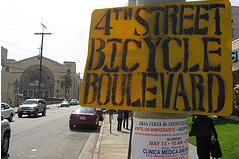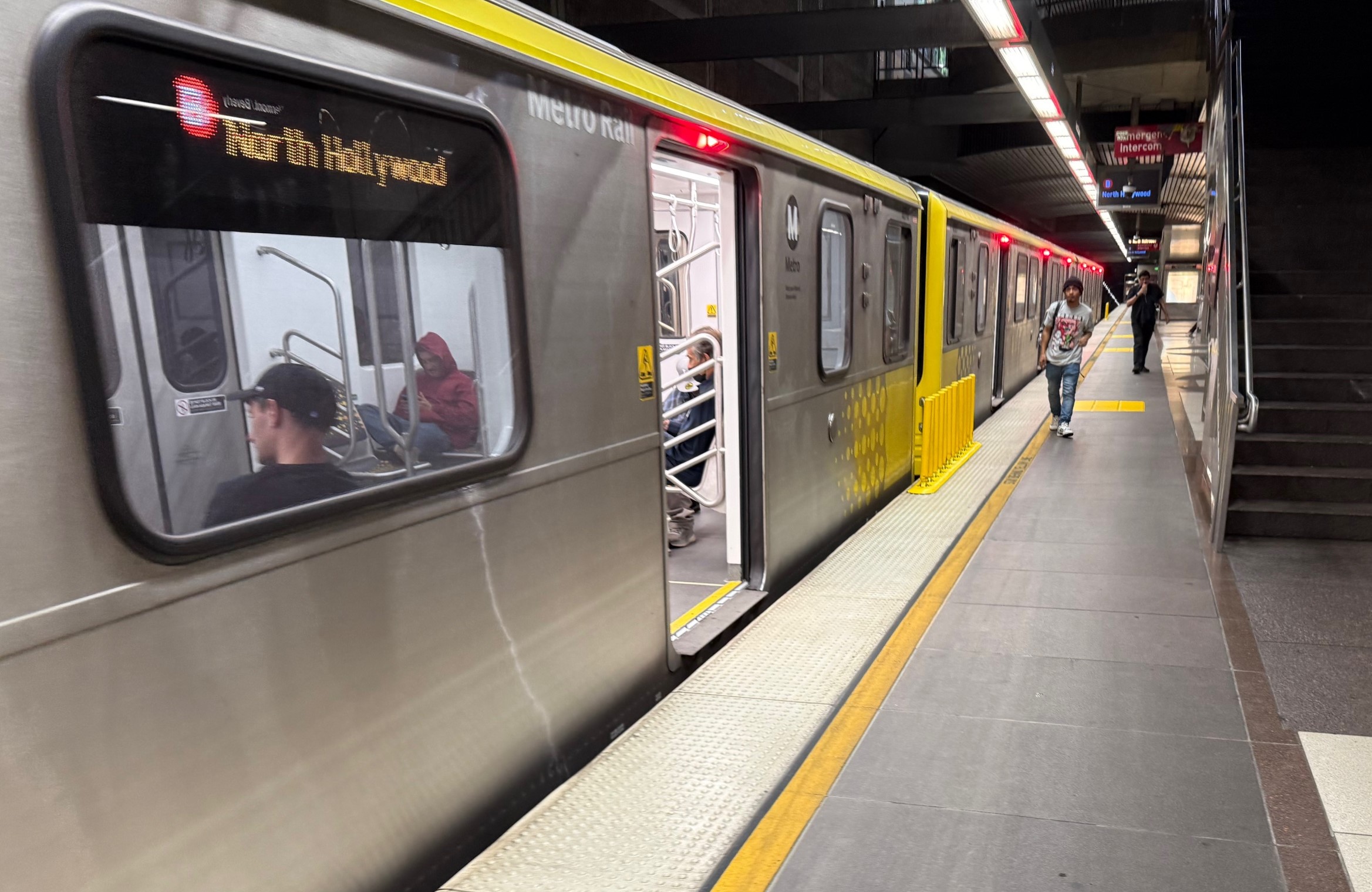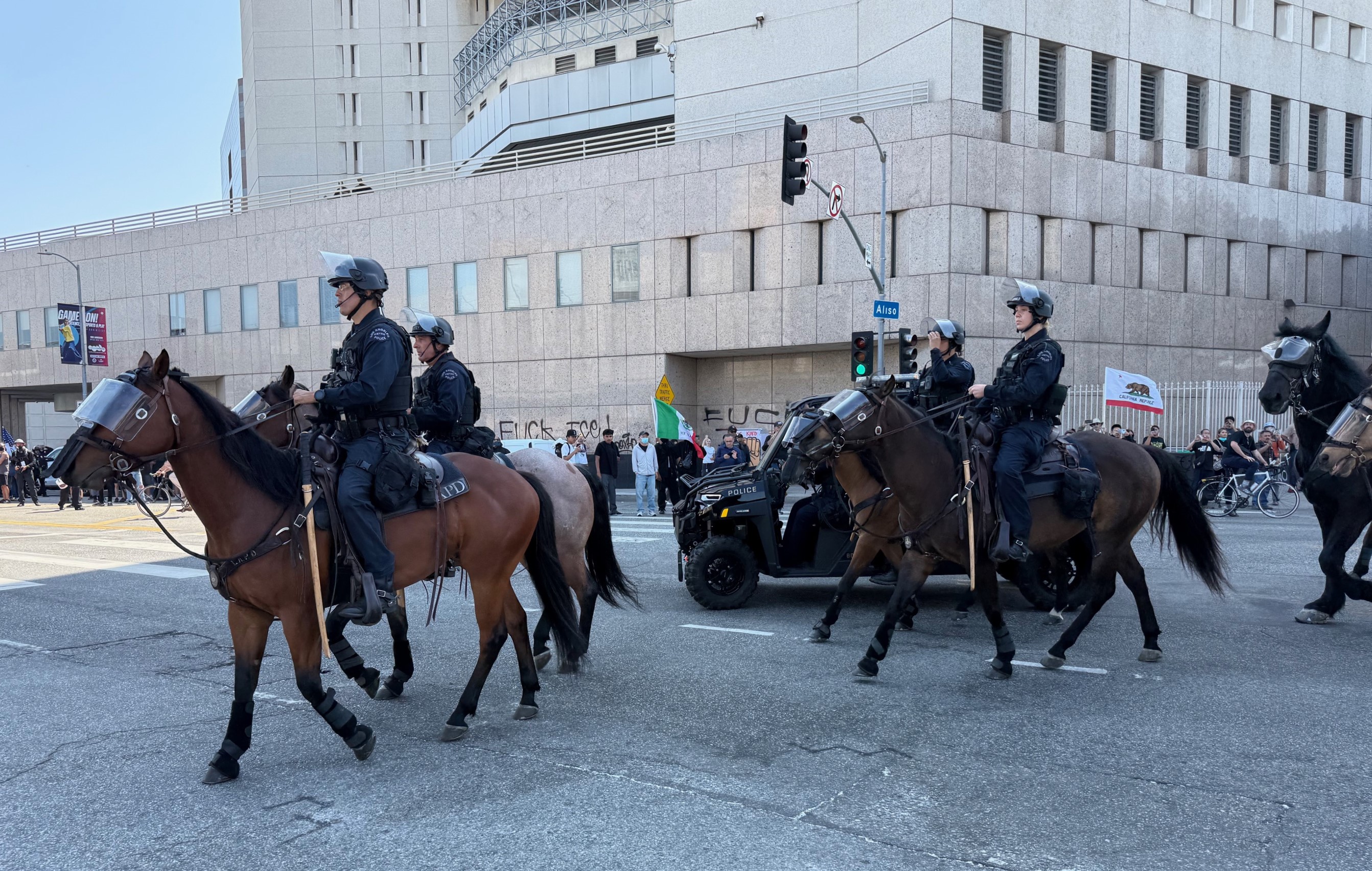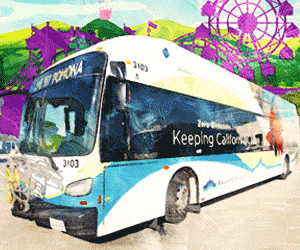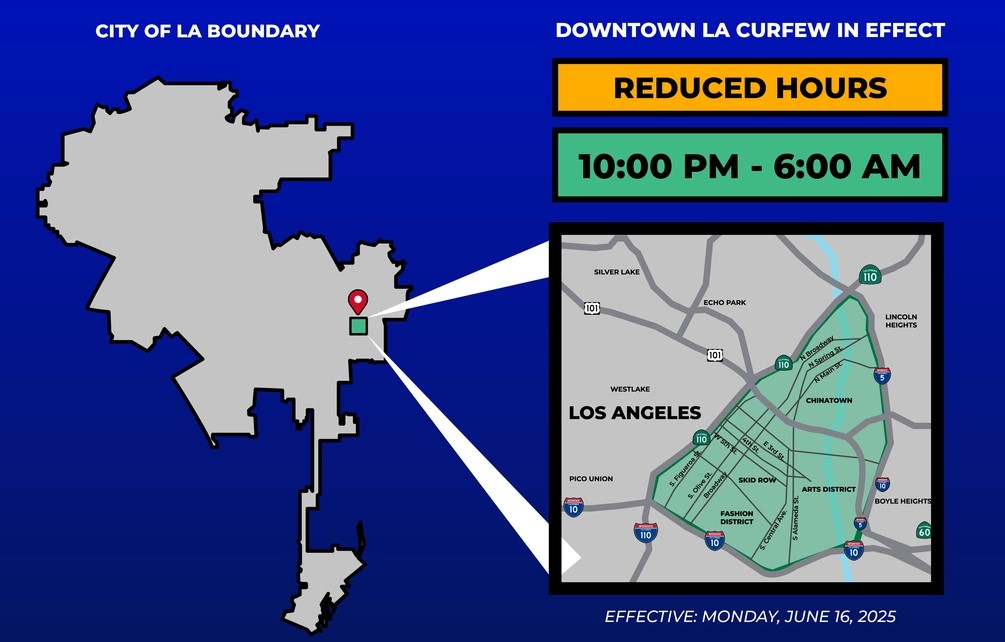View 2011 Metro Call for Projects - Bikeways in a larger map
Google Map of Bikeways projects put together by Bikeside's Daniel Rodman
(This is Part 4 of our Call for Projects review. Part 1 explained why this series is important. Part 2 looked at the car capacity enhancement proposals. Part 3 looked at freight movement projects. Part 5 on pedestrian programming will wrap the series on Monday.)
The LADOT Bike Blog has already written in some detail about the different projects that are part of their request to Metro. To make a Streetsblog analysis easier, we created three categories for Bikeways applications: specific roadway projects, broad projects and Car Free Day.
Over the years, the LADOT's Bikeway applications to the Call have been a lightning rod for criticism. One reason for the criticism is that LADOT had a tendency to submit projects without getting community buy-in. Also, LADOT's Bikeway projects have been lacking compared to applications put in by other cities, such as Long Beach.
I have to admit to feeling underwhelmed about the "project specific" applications which include connecting the Orange Line and River Bike paths, construction of a bridge over Taylor Yard and a new stand-alone segment of the Ballona Creek Bike Path. The accumulated cost of these projects is almost $20 million and the city is requesting over $16 million.
The dominant debate among cyclists over the last several years was about how to improve conditions along the most traveled roads in the city. After years of advocacy, the Backbone Bikeway Network was enshrined in the last draft of the Bike Plan. Yet, the first time the city has a chance to apply for projects along the Backbone, it doesn't apply for funds that would improve conditions on any actual street, much less the Backbone. Later in the call, there is a request for 15 Bike Friendly Streets, but the streets aren't yet named.
I know the city can't apply for projects based on a Bike Plan that hasn't been passed yet, and the Draft Plan has a couple more bureaucratic hurdles before final passage. But there really wasn't one project anywhere on the Backbone that has an improvement project ready?
The next set of projects are what we're referring to as "broad projects." These projects don't have a specific are in which they're working, but do have the potential to bring a lot of long-term improvements to the area. The projects have names that probably don't make sense to someone who hasn't been following bike issues such as, "Bundle of Bicycle Friendly Streets," "Bike Friendly Street In a Box," and "Bike Corral Program."
When Cafe de Leche in Northeast L.A. wanted to install a Bike Corral, a series of bike racks placed in a protected area on the street in place of a car parking space, the cafe ran in to a series of bureaucratic hurdles. Eventually, the cafe would be forced to pay for a parking amenity which is pretty common in bike-friendly cities. Now, the LADOT is proposing to bring 30 corrals to the city. True, there's little money behind the program now, and LACBC's Alexis Lantz points out that it takes Metro years to hand out funds from the call, but it's an encouraging sign that corrals, which were verbotten in 2009 have become mainstreamed.
Or, as Lantz put it in a phone interview, "Two bike corrals per district would be a great way to get these out throughout the city."
The "Bundle of Bicycle Friendly Streets" and "Bike Friendly Street in a Box," could also be programs that bring long-term change by expanding LADOT's tool box. The term "Bike Friendly Streets" first appeared in the 2010 Draft Bike Plan as a replacement for Bike Boulevards. However, the plan is unclear what a Bicycle Friendly Street actually is, although the LADOT Bike Blog has written about some treatments the streets could see such as roundabouts and loop detectors.
The most famous of the potential "Bicycle Friendly Streets" is 4th Street in Mid-Wilshire and Korea Town. The LACBC has a campaign designed to improve the street, 4th District City Council Man Tom LaBonge schedules rides on it, and it's been a cause celeb within the community for years. Even if it took two years, seeing major bicycle improvements along this route would be a visible and substantial victory for the advocacy community.
If the LADOT is serious about creating Bicycle Friendly Streets that are similar to the Bike Boulevards of Long Beach and Portland, then developing a tool box and beginning to place treatments on streets are the obvious first steps. But too often, the city fails to make even the first steps on what could be great projects.
And last funding proposal is for "Car Free Day," a once-a-month promotional event designed to get more people to try a commute by foot, bike or transit. In a city that's expanded Bike to Work Day to an entire week, celebrates Park(ing) Day and now CicLAvia, it seems like there has to be a bike lane project somewhere that could use those funds.
